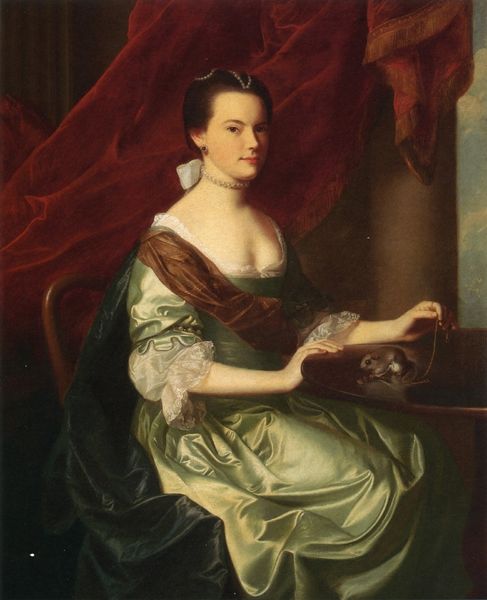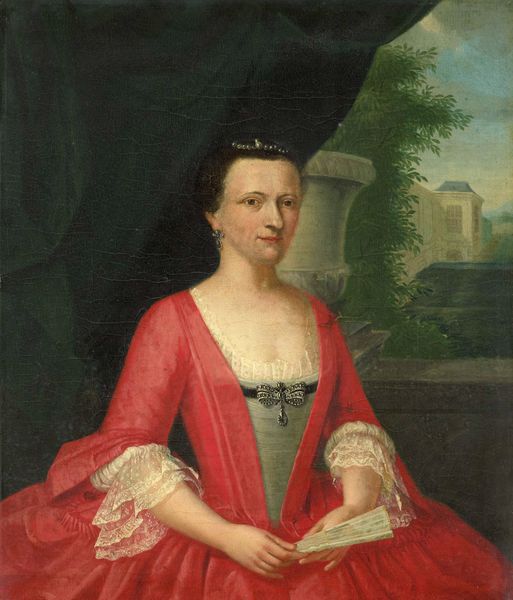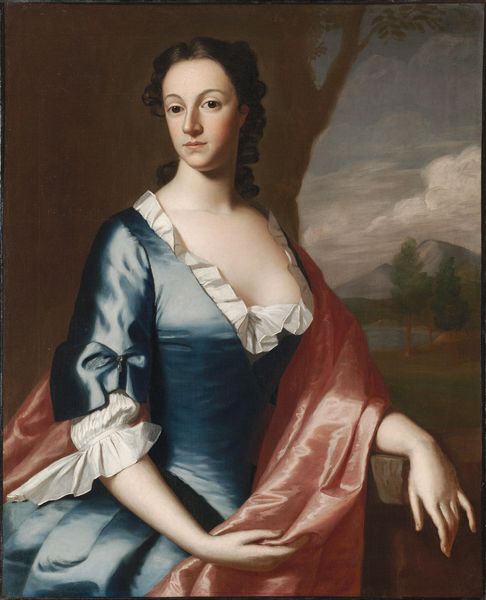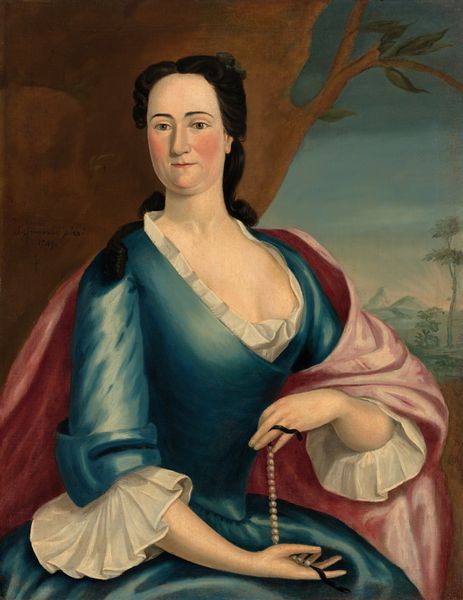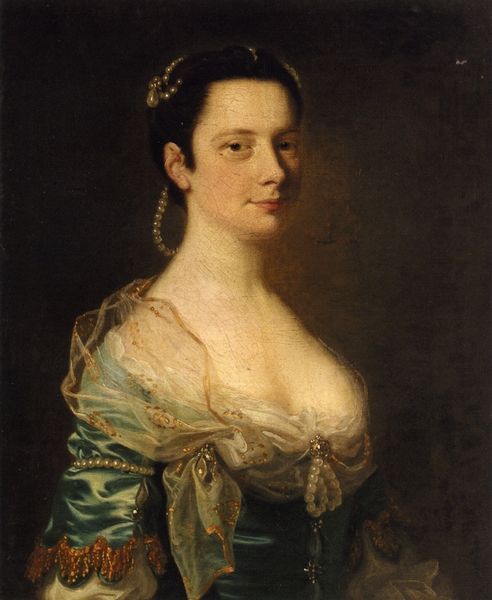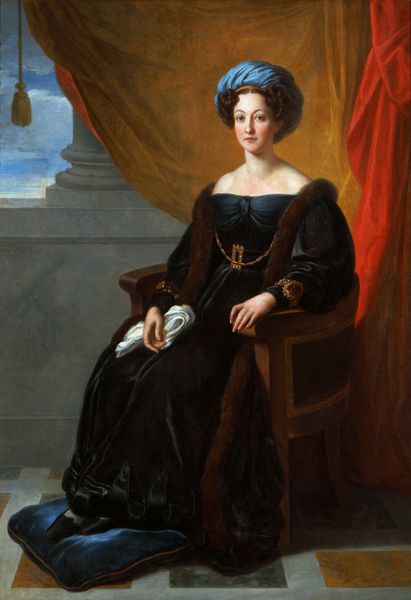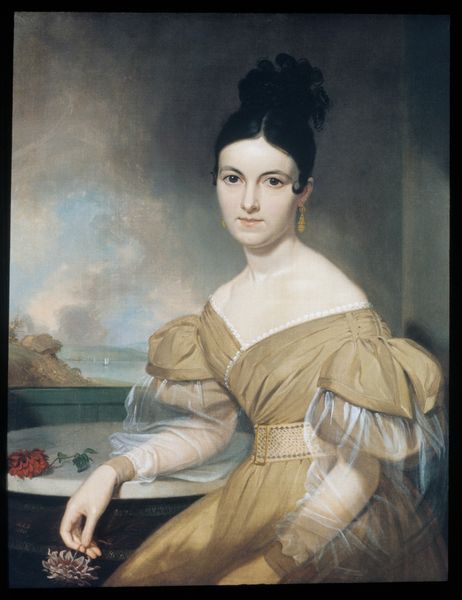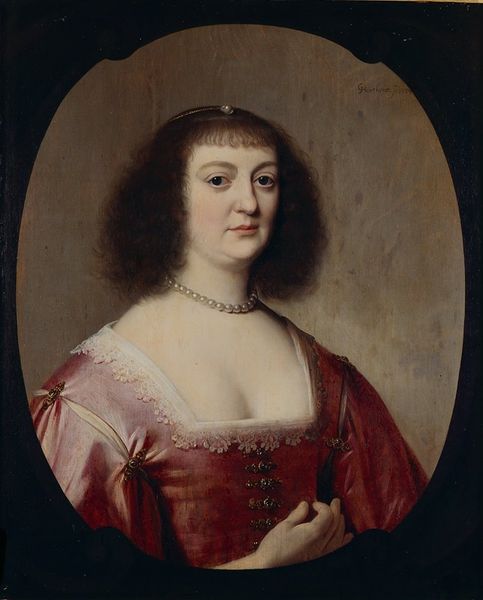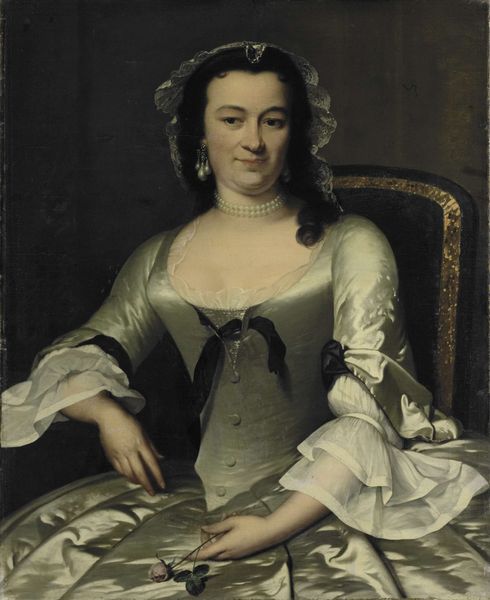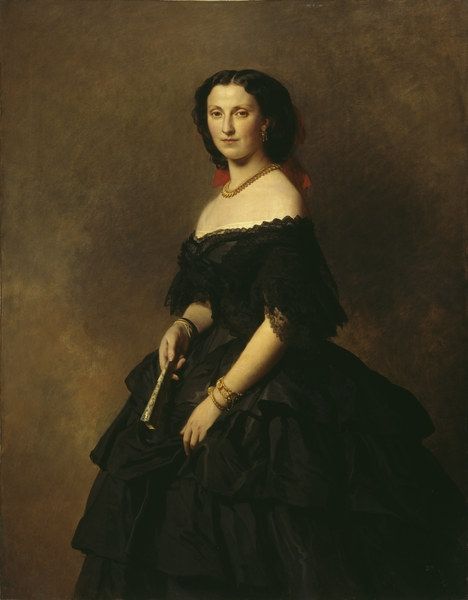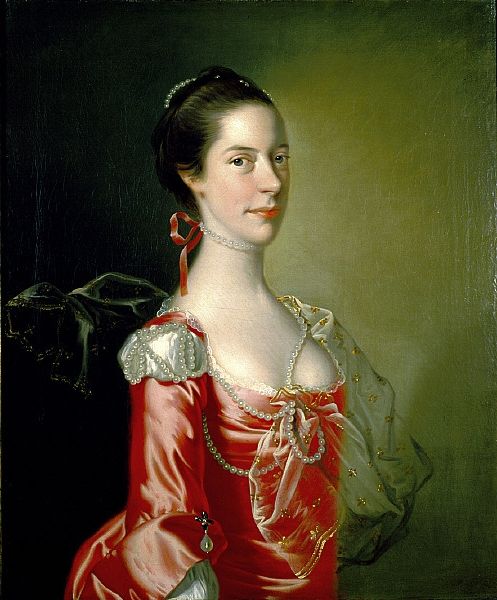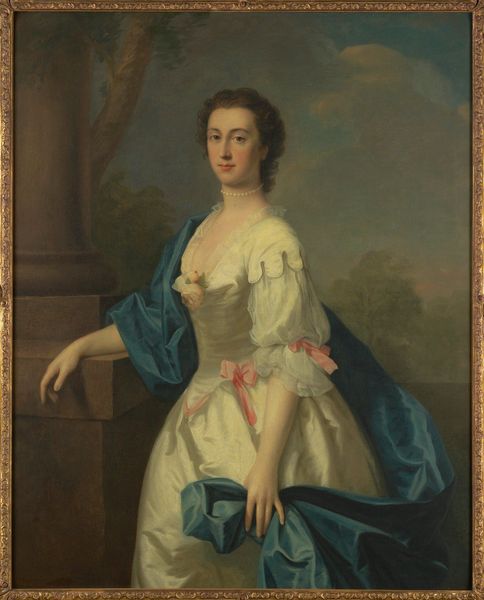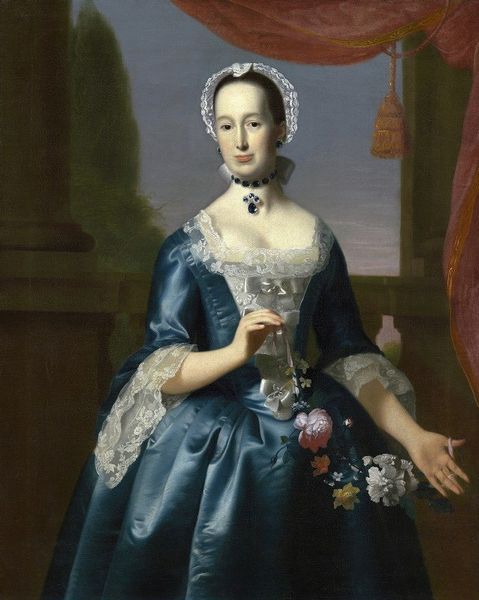
Portrait of Sophia Magdalena von Holzhausen, née von Günderrode c. 1700 - 1725
0:00
0:00
oil-paint
#
portrait
#
baroque
#
oil-paint
#
genre-painting
Dimensions: 104.4 x 86.8 cm
Copyright: Public Domain
Curator: This striking work is a portrait of Sophia Magdalena von Holzhausen, née von Günderrode. Painted anonymously sometime between 1700 and 1725, it currently resides here at the Städel Museum. Editor: She’s giving me this quiet, poised energy…like a lake just before the storm rumbles in. And that little dog, the perfect accessory! It’s almost like the artist wanted to soften the scene, make her approachable despite all the… grandeur. Curator: Absolutely. Portraits during the Baroque era were tools for negotiating identity and power. Sophia Magdalena's presentation—her elegant gown, jewelry, and even the inclusion of the dog as a status symbol—speaks volumes about her position within society and, arguably, the societal expectations placed upon women. Editor: Oh, expectations. She’s probably thinking, "Just get this portrait done, I have a whole tapestry to embroider, a house to run." It's there, subtly… a hint of exhaustion behind the regal façade. What I really love is how her black dress contrasts that luscious red drape. Very dramatic. Curator: Indeed, and the interplay between light and shadow emphasizes not just the opulence of her garments but perhaps the hidden complexities of her life as well. Let’s consider how class, gender, and even marital status dictated a woman's existence then. Sophia Magdalena wasn’t simply a woman; she was a representative of her family, constrained by a rigid societal structure. The dog further highlights how she probably saw the social scene. Editor: That’s heavy, but it gives the portrait such resonance. You start to wonder about all the unpainted moments, the stories behind those eyes. I mean, her posture alone is intriguing – what’s supporting that hand? Curator: Exactly, her social obligations weigh on her like a golden chain. Her hand is probably laid on an equally precious silk cushion, an addition that further enhances her aura of respectability. I think by analyzing what these things symbolize within historical contexts, we achieve an important step in seeing how individuals internalize these norms. Editor: Looking at it now, I feel this deep compassion for Sophia. To be seen and not really seen... it's heartbreaking. I wish I knew more about HER, you know, not just her position. Curator: Well, perhaps that’s the very challenge these portraits offer us: to look beyond the surface and imagine the untold stories etched onto the faces of those who came before us. Editor: Absolutely! That’s what makes this worth my while. Each glance can become this new untold story.
Comments
No comments
Be the first to comment and join the conversation on the ultimate creative platform.
